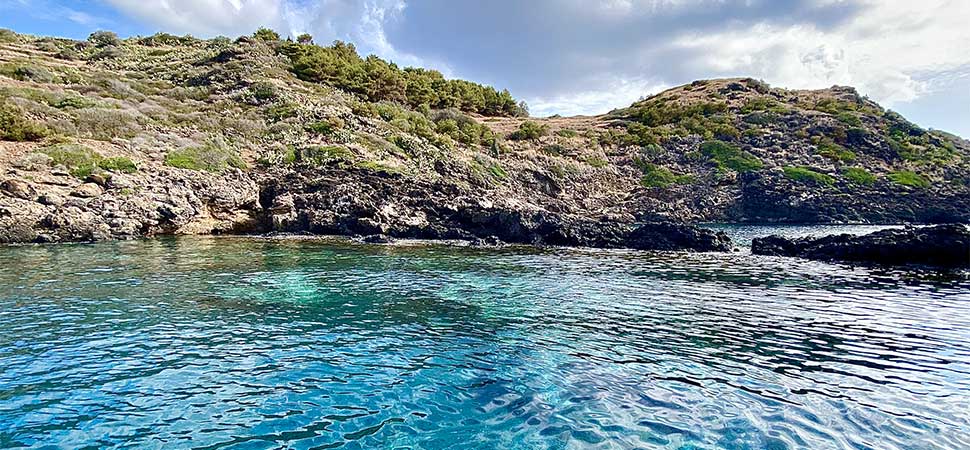
When one thinks of the islands that surround Sicily, one immediately thinks of Lampedusa, Stromboli, Panarea and Pantelleria.
Then, there is Ustica, the islet often associated only with the plane crash of 1980, but which in reality represents a precious naturalistic jewel that offers, to those who decide to visit it, a holiday dedicated to relaxation and nature, which here reigns almost supreme. Not surprisingly, this small land of Tyrrhenian Sea is related to the events of Ulysses, narrated by Homer In his work Odyssey.
The Island of Ustica: a jewel with a legendary past
Legend has it that the island of Ustica is nothing but the place where, second the Odyssey written by Homer, Ulysses met the sorceress Circe, who, in order to keep the hero in his home, transformed his navigation companions into pigs.
The fascinating legend goes well with the beauty of Ustica, almost totally surrounded by a “Marine Protected Area”: just dive to admire prairies of oceanic posidonia and a very lively marine fauna, made up of snapper, tuna, lobster, brown grouper and octopus. TO Ustica there is also a Underwater Archaeological Museum and to visit it you have to go between Punta Cavazzi e Punta Spalombatore.
Among other recommended places to admire the beautiful backdrops of Ustica I'm there Shoal of Colombara, whose waters are so crystalline and clear as to reveal the typical marine life of the place, the cove Amphitheater crescent-shaped and Spalmatore cove, also surrounded by many paths where it is possible to go trekking immersed in nature.
The caves and the most beautiful beaches of Ustica
By boat, an excursion to the Blue Grotto, beyond whose large opening lies an extraordinary environment which, thanks to the reflections of the sun on the turquoise waters, offers a truly magical atmosphere.
The Blue Grotto, inside which there is a sort of pyramid formed by stalagmites, is connected to Grotto of San Francesco Vecchio. Among the other karst cavities to visit there is also the Pastizza Cave, located right in front of the stack of the same name.
The island is also home to a Nature Reserve, of which the Guard of the Turks: it is the panoramic peak of a 244 m high volcano, surrounded by Mediterranean scrub, legume plants, vines and the inevitable prickly pears.
Among the most beautiful beaches on the island, they are particularly worth a visit Cala Sidotti, composed by black sand and pebbles and Cala Santa Maria, located a stone's throw from the pretty Fishermen's Village.
What to see in Ustica: from the village of the same name to the archaeological site
In the extreme southwest of the island you can visit the Punta Cavazzi Lighthouse: the building is located in a particularly rocky and jagged stretch of coast, dominating the underlying one natural swimming pool bordered by low rocks and communicating with the sea by an underground tunnel.
Instead, close to Cala Santa Maria is situated Tower of S. Maria, a watchtower forming part of the ancient defensive system built in the past throughout the whole Sicilia. It dates back to 1759 and was Charles III of Bourbon to want its construction, entrusting the project to Pigonati, the one who also made the Tower of the Spalmatore near the homonymous beach.
Also Ustica has its own archaeological site and it is about Rocca della Falconiera, an ancient urban agglomeration of Roman origin, then fortified in the Bourbon era: this tower was built on the edge of a volcanic crater, at a height of 157 m., offering visitors a breathtaking view of the sea of Ustica.
Discovering the village of Ustica
Worth a visit then town of Ustica, overlooking the beautiful Cala of Santa Maria, at the foot of a small promontory. Piazza Umberto I it is the beating heart of the city and the Church of San Ferdinando dating back to the 700th century and the house where he lived Antonio Gramsci. The politician, known for having founded the Communist Party, stopped at Ustica during his exile and in his letters he does not skimp on compliments to the island, of which he describes the pleasant landscapes, the marine visions and the magnificent sunsets.
Strolling for the streets of Ustica, in the shadow of Castello Saraceno which dominates it from above, many can be seen murals colorful, depicting still lifes, landscapes, historical scenes and beautiful trompe-l'œil. The oldest representations of this street art were made by Savior River. If you want to know the face more pristine and authentic of Sicily, reach out the island of Ustica, a land where history and myth merge to create incomparable atmospheres.
© Image by Van's travels, CC BY-SA 4.0, via Wikimedia Commons









